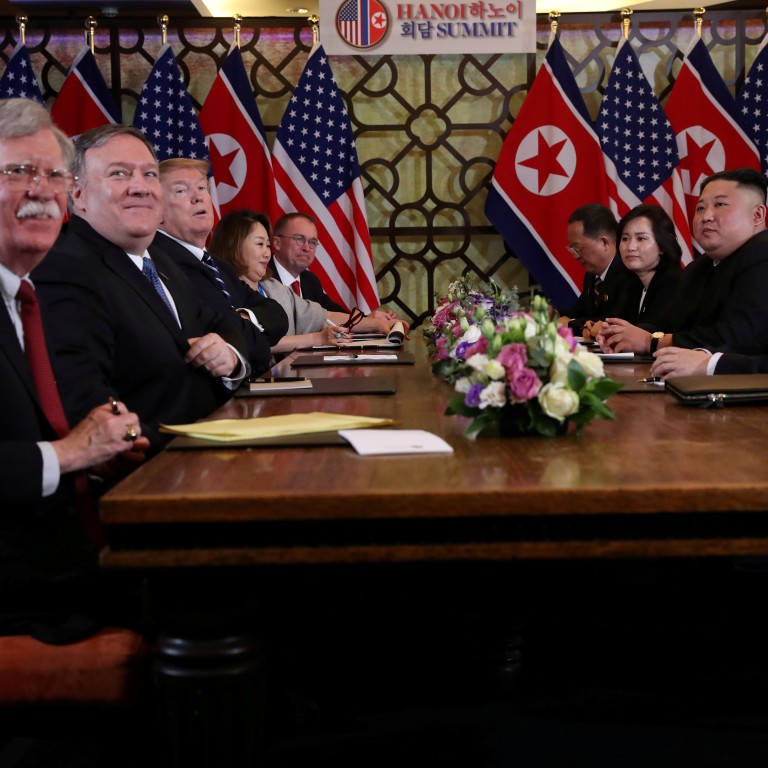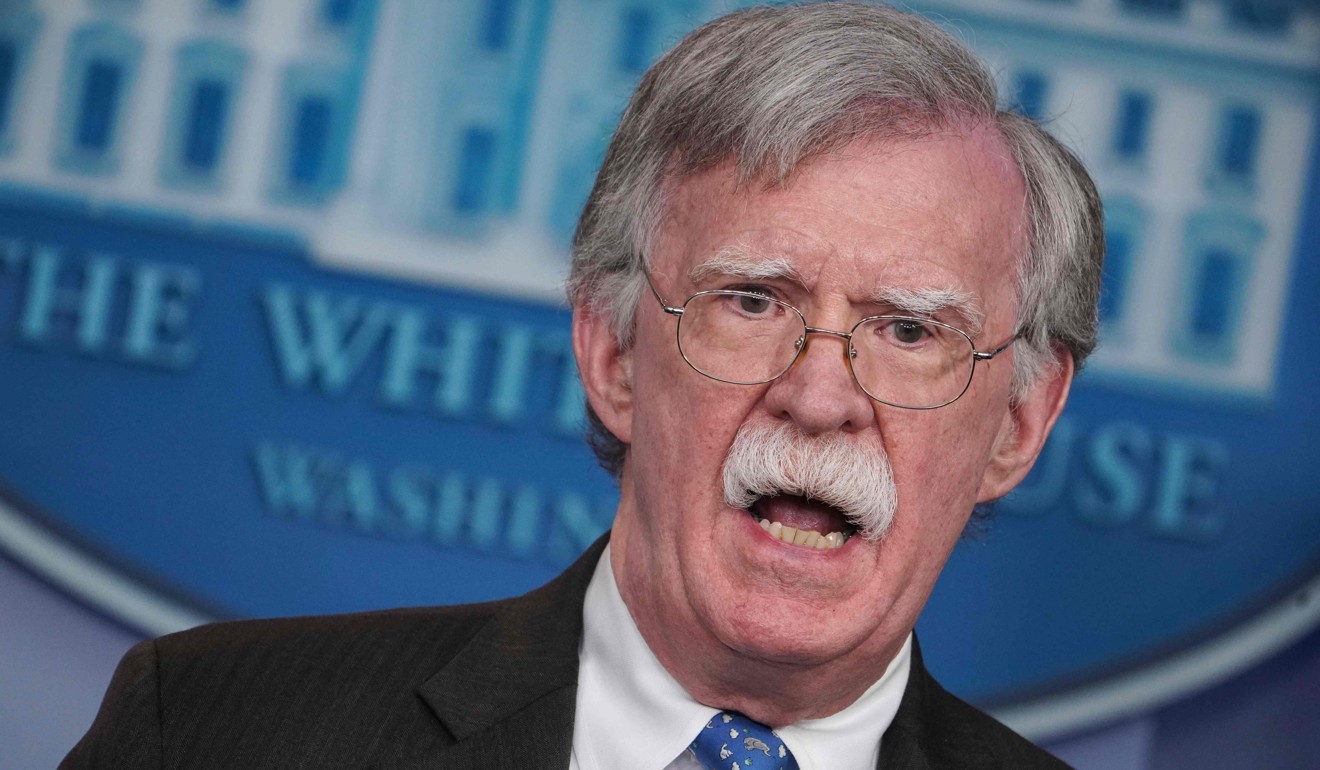
At Hanoi summit, Donald Trump asked Kim Jong-un to hand over North Korea’s nuclear weapons
- American president handed North Korean leader a piece of paper containing a blunt call for the transfer of Pyongyang’s nuclear bombs and their fuel to the US
On the day their talks in Hanoi collapsed in February, US President Donald Trump handed North Korean leader Kim Jong-un a piece of paper that included a blunt call for the transfer of Pyongyang’s nuclear weapons and bomb fuel to the United States, according to a document seen by Reuters.
Trump gave Kim versions in Korean and English of the US position at Hanoi’s Metropole hotel on February 28, according to a source familiar with the discussions who spoke on condition of anonymity. It was the first time Trump had explicitly defined what he meant by denuclearisation directly to Kim, the source said.

A lunch between the two leaders was cancelled the same day. While neither side has presented a complete account of why the summit collapsed, the document may explain it.
The document’s existence was first mentioned by White House national security adviser John Bolton in television interviews he gave after the two-day summit.
Bolton did not say what was in the document, but it appeared to represent his long-held and hardline “Libya model” of denuclearisation that North Korea has rejected repeatedly. It would probably have been seen by Kim as insulting and provocative, analysts said.
Trump previously distanced himself in public comments from Bolton’s approach and said a “Libya model” would only be employed if a deal could not be reached.
The idea of North Korea handing over its weapons was first proposed by Bolton in 2004. He revived the proposal last year when Trump named him national security adviser.
The document was meant to provide the North Koreans with a clear and concise definition of what the US meant by “final, fully verifiable, denuclearisation”, the source said.
The White House did not immediately respond to a request for comment. The State Department declined to comment on what would be a classified document.

After the summit, a North Korean official accused Bolton and Secretary of State Mike Pompeo of “gangster-like” demands, saying Pyongyang was considering suspending talks with the US and may rethink its self-imposed ban on missile and nuclear tests.
The English version of the document, seen by Reuters, called for “fully dismantling North Korea’s nuclear infrastructure, chemical and biological warfare programme and related dual-use capabilities; and ballistic missiles, launchers, and associated facilities”.
It also called on North Korea to provide a comprehensive declaration of its nuclear programme and allow full access for US and international inspectors; to halt all related activities and construction of new facilities; to eliminate all nuclear infrastructure; and transition all nuclear programme scientists and technicians to commercial activities.
The summit in Vietnam was cut short after Trump and Kim failed to reach a deal on the extent of economic sanctions relief for North Korea in exchange for its steps to give up its nuclear programme.
Their first summit in Singapore in June 2018 was almost called off after the North Koreans rejected Bolton’s repeated demands for it to follow a denuclearisation model under which components of Libya’s nuclear programme were shipped to the US in 2004.
Seven years after a denuclearisation agreement was reached between the US and Libya’s leader Muammar Gaddafi, Washington led military action to overthrow him and he was killed by Western-backed rebels.

Last year, North Korea officials called Bolton’s plan “absurd” and noted Gaddafi’s “miserable fate”.
After North Korea threatened to cancel the Singapore summit, Trump said in May 2018 he was not pursuing a “Libya model” and was looking for an agreement that would protect Kim.
“He would be there, he would be running his country, his country would be very rich,” Trump said at the time. “The Libya model was a much different model. We decimated that country.”
The Hanoi document was presented in what US officials have said was an attempt by Trump to secure a “big deal” under which all sanctions would be lifted if North Korea gave up all of its weapons.
US-North Korean engagement has appeared to be in limbo since the Hanoi meeting.
Pompeo said on March 4 he hoped he could send a team to North Korea “in the next couple of weeks”, but it has not happened yet.
Jenny Town, a North Korea expert at the Washington-based Stimson Centre think tank, said the content of the US document was not surprising.
“This is what Bolton wanted from the beginning and it clearly wasn’t going to work,” Town said. “If the US was really serious about negotiations they would have learned already that this wasn’t an approach they could take.”
Town added, “It’s already been rejected more than once and to keep bringing it up … would be rather insulting. It’s a non-starter and reflects absolutely no learning curve in the process.”
North Korea has repeatedly rejected unilateral disarmament and argues that its weapons programme is needed for defence, a belief reinforced by the fate Gaddafi and others.

